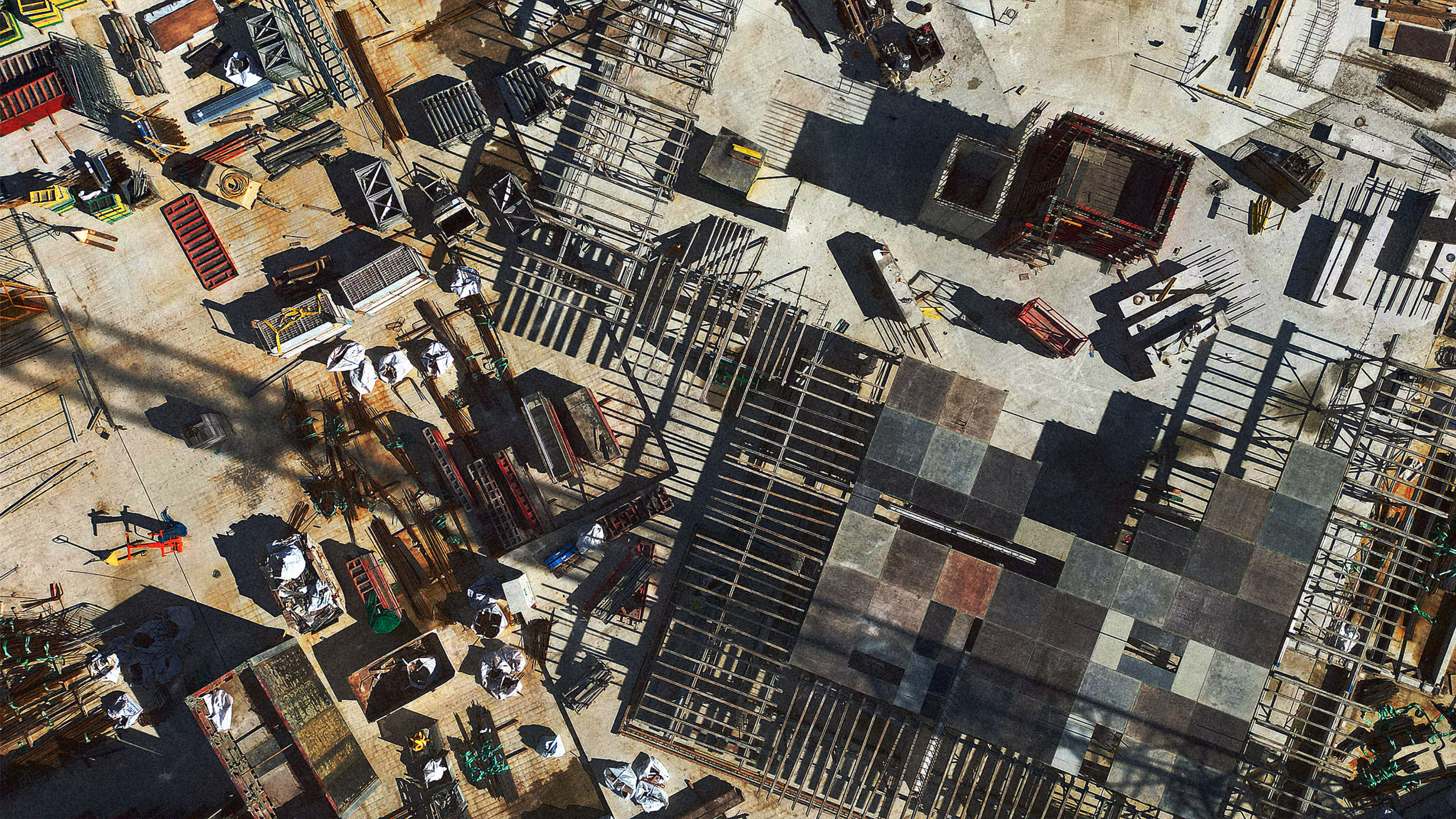Our homes, schools, and offices are made up of concrete, timber, metals, and textiles. But as we spend our days in these spaces, we rarely think about where the materials came from or the people who helped create them.
With Every Fiber, a new exhibition that launches May 4, encourages people to consider the materials that make up the built world around us. And there’s plenty we should be caring about. The tragic reality is that there is a lot of forced and child labor that goes into making building materials. But the exhibition at Grace Farms in New Canaan, Connecticut, makes the case that when everyday people start to care about global supply chains, we can begin to eradicate some of the suffering.
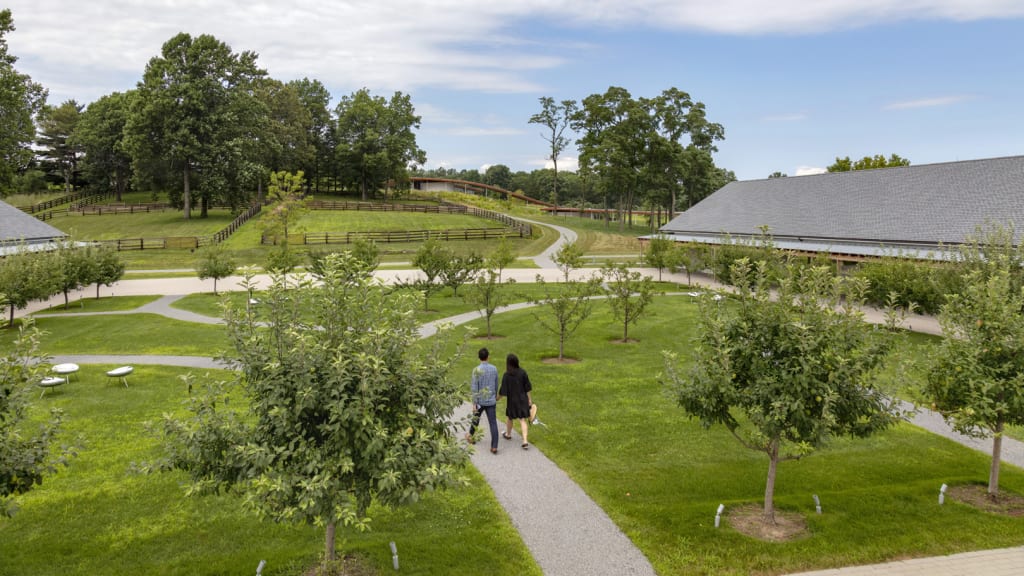
Inside Grace Farms
Grace Farms isn’t really a farm at all. It’s 80 acres of publicly accessible meadows, woods, and wetlands designed to be a space that brings together people from different sectors and communities, all with the goal of eradicating modern slavery. The space is anchored by a stunning multipurpose building made of glass, concrete, steel, and wood, with a meandering covered walkway across the landscape. Inside, there’s space for art installations, performances, and gatherings.
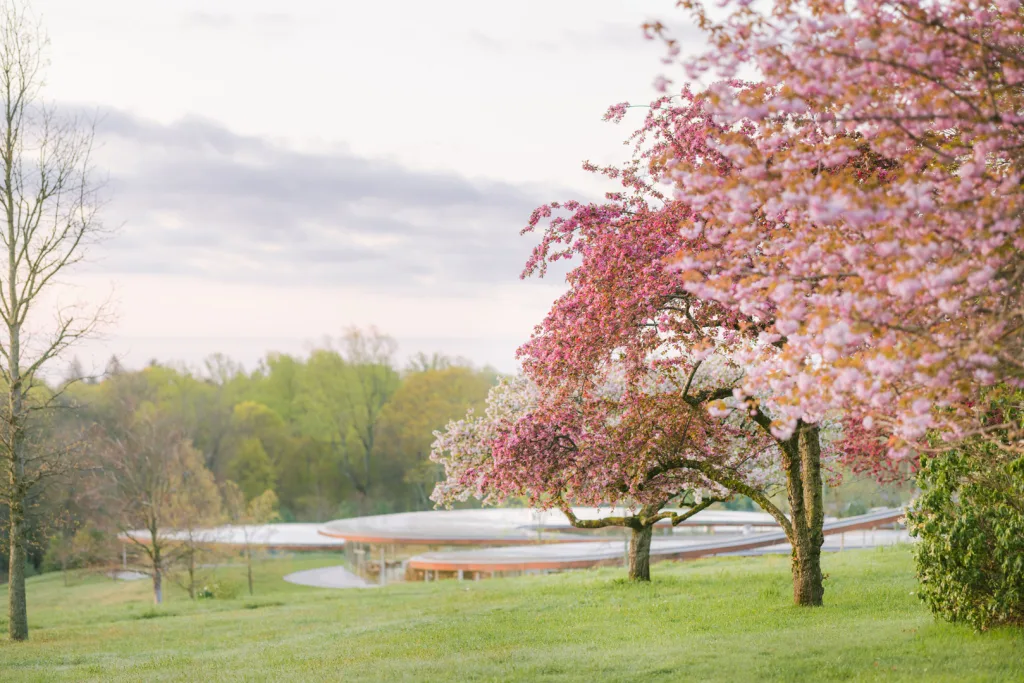
Sharon Prince came up with the vision for Grace Farms in 2009 when she went down a rabbit hole, exploring the evidence surrounding forced labor in the building industry. The International Labor Office estimates that 18% of all forced labor happens in the construction industry, which includes building, mining, and materials production.
Over the past few decades, organizations have brought to light human exploitation in other sectors. In 1983, Paul Rice founded Fair Trade USA, which urged consumers to think about workers in the coffee, tea, and chocolate supply chains. After the Rana Plaza factory in Bangladesh collapsed 11 years ago, organizations like Remake have highlighted the suffering in the fashion supply chain. In 2022, the U.S. government passed a law banning all goods made in Xinjiang, China, which is known for using forced labor by Uyghur Muslims.
Prince believes that the building industry hasn’t faced the same kind of scrutiny surrounding its labor practices, and it’s time for that to change. “We’ve seen the food and fashion industries held to account,” she says. “It’s time for us to do the same thing with the building industry.”
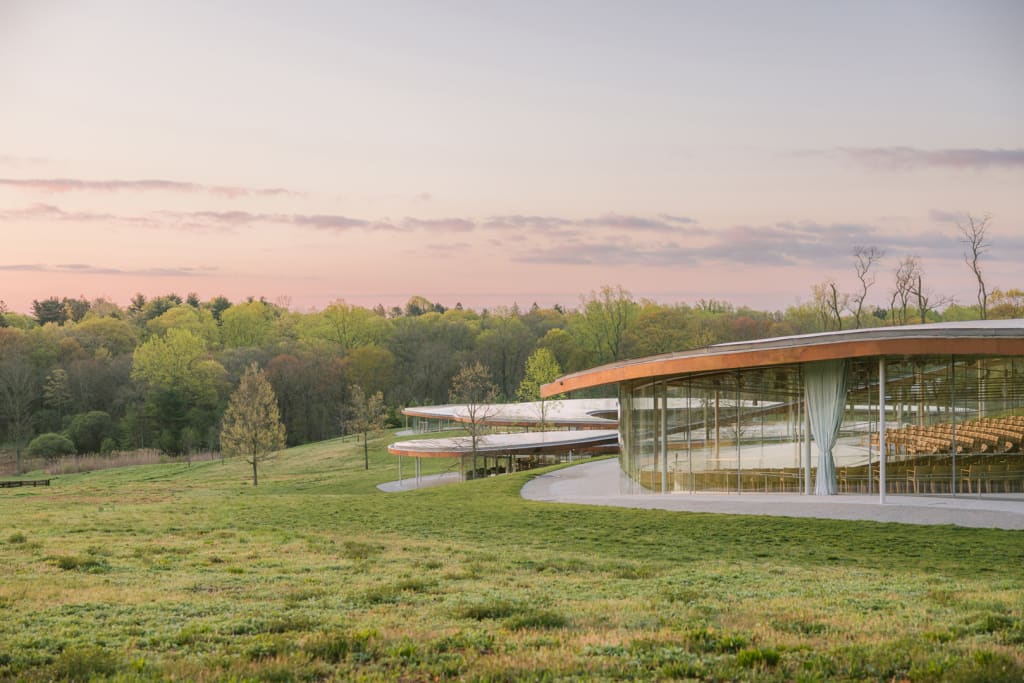
Fifteen years ago, Prince began work on the Grace Farms Foundation. In 2015, with the help of donations, she launched the Grace Farms complex. Over the past nine years, it has gathered people to explore nature, justice, arts, and community, with the overarching message of eradicating forced labor. In 2020, Prince took the movement a step further by launching the Design for Freedom Working Group made up of more than 100 leaders spearheading change to labor practices in the building materials supply chain.
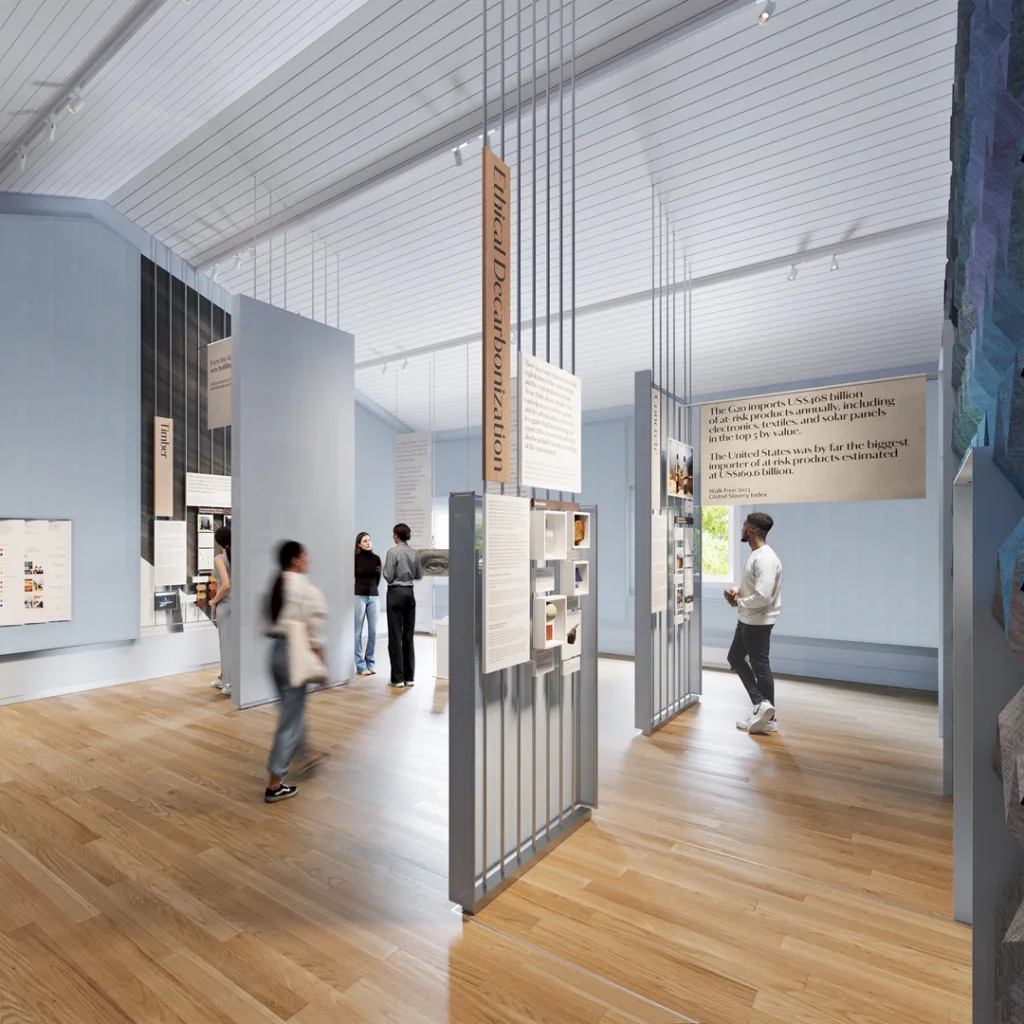
With Every Fiber
The With Every Fiber exhibition is Grace Farms’ latest effort to draw awareness to the problem. Curated by Chelsea Thatcher, Grace Farms’ chief strategy officer, it includes the work of 20 individuals and companies. It features poetry by U.S. poet laureate Joy Harjo and art by Carrie Mae Weems.
Nina Cooke John, principal of Studio Cooke John Architecture, partnered with MillerKnoll to wrap the entire exhibit in a facade using a Maharam textile. The material is pulled several inches from the gallery’s walls, which helps direct viewers’ eyes to the architecture. Many people are familiar with questions of ethical production in the garment industry, and these textiles start a conversation that can lead to the construction industry. It’s also meant to illustrate that a “veil” covers the construction process.
There are images by humanitarian photographer Lisa Kristine that document the suffering of forced labor. As you take in the art, you will hear an 18-minute recording from the London Philharmonic Orchestra of music by Purcell, Dvořák, and Mozart. It was originally performed in 2020 in London on the U.N.’s World Day Against Child Labor.
The exhibit—and Grace Farms more broadly—asks us not ignore the suffering that goes into the built environment. But it also encourages us to believe that change is possible. “We want people to come away feeling hopeful,” Prince says. “We believe change is possible. We just need to start caring.”
Recognize your brand’s excellence by applying to this year’s Brands That Matter Awards before the early-rate deadline, May 3.
